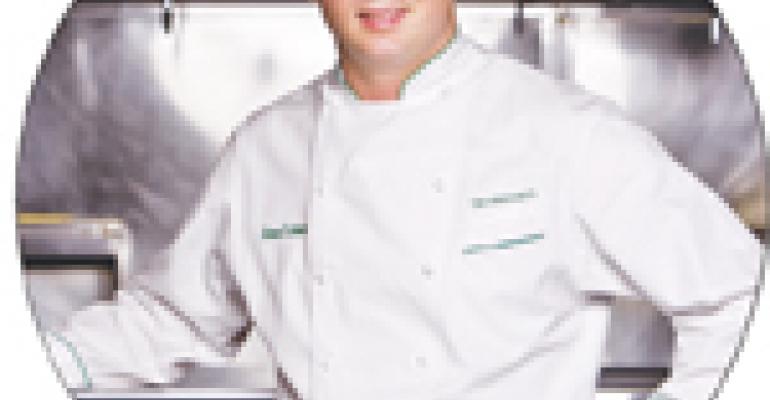While kitchen equipment often is built for speed, an increasing number chefs seek equipment that can cook low and slow, save energy, preserve freshness or turn waste into fodder for future foods.
Two years ago, for example, Todd Stein learned about a humidity-controlled slow cooker perfected in the airline food industry. As executive chef for the soon-to-open Cibo Matto and Roof restaurants in Chicago, Stein couldn’t believe how well the cook-and-hold cabinet maintained exact temperature and product integrity for several hours without compromising the quality of the pricey cuts of meat inside.
“You can hold anything in it: barbecued brisket, any braised meats, steaks, you name it,” Stein says. “I’ve used them in other restaurants…we’re going to have two in each restaurant when we open.”
Seal of approval Chef Steven Greene says one of his favorite pieces of kitchen equipment is his sous vide sealer, but he doesn’t use it for the purpose intended. Green, executive chef at Devereaux’s Restaurant in Greenville, S.C., uses the restaurant’s vacuum sealer to preserve his pricey fish. “We want our fish to stay as fresh as possible,” Greene says. Greene fillets whole fish and vacuum seals individual pieces before icing. The plastic barrier eliminates contact with air and water and reduces sogginess. “It works great on most every fish, except tuna,” he adds, noting that the process pulls too much blood out of the red-fleshed fish. Greene says the lower vacuum pressure settings on his sous vide sealer allow him to avoid compressing soft-flesh fish, while he uses double the pressure to vacuum pack and compress fruits. The high pressure intensifies many fruits’ natural flavors and turns them translucent. Fork to farm At Mind, Body & Spirit Restaurant in Rochester, Minn., Matt Roman’s favorite restaurant machine is his large-scale dehydrator, which he uses to accelerate decomposition of food scraps and biodegradable packaging. Though the machine doesn’t produce compost, it produces a rich “soil amendment” designed to feed plant roots. “Our restaurant’s core theme is to serve a menu of locally grown, organic foods, so we got the machine in keeping with that sustainability ideal,” says Roman, environmental awareness director for the restaurant. “We don’t have a dumpster outside…and in the kitchen we have just two 35-gallon trash cans.” Roman estimates the machine turns about 4,000 pounds of waste into 400 pounds of dehydrated material weekly. The bulk of that is given to farmers, while some is used for the restaurant’s herb garden. Aneed for speed For companies like Pizza Patron, however, speed thrills. Throughout much of 2008, the 85-unit pizza chain helped develop a new impingement oven that shaved baking times from 5 minutes to 3.5 minutes, perfect for its new drive-thru stores. “The oven cooks so much faster because of the way it vectors the superheated air,” says Antonio Swad, founder and chief executive. The new oven’s forced-air chambers better accelerate the flow of air, he says. “It doesn’t use more gas or increase the speed of the fan,” he says. “[It’s] just a redesign [that] adds more air velocity than before.” Swad says the high-tech oven did not force Pizza Patron to change its pizzas or systems to adapt to the new machine. “Nothing’s more trainable than something you don’t have to change,” Swad says. “We worked closely with the manufacturer to develop it, so it’s a great fit for us.”

